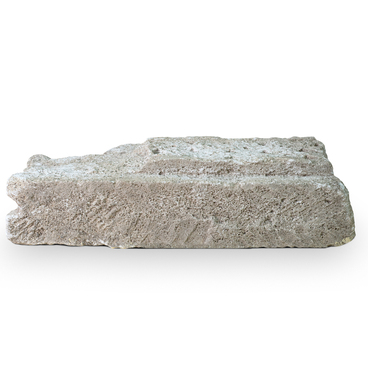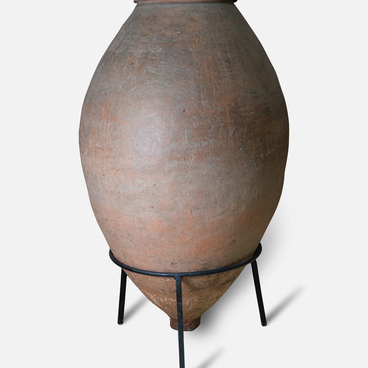A fragment of a carved limestone slab depicting the biblical story “Daniel in the Lions’ Den” was added to the collection of the Museum of the History of the Resort City of Sochi in 2012.
The fragment of a carved limestone slab depicting the biblical story of “Daniel in the Lions’ Den” was discovered during excavations of a medieval temple in the village of Vesyoloye in the Adler District of Sochi. The first scientific description of this temple, located near a vegetable farm in Adler, was provided by Soviet archaeologist Nikita Anfimov in 1957. In 1972, Vadim Bzhania from the Black Sea team of the North Caucasian Expedition, led by the USSR Institute of Archaeology, conducted further exploratory excavations. The temple was revisited during the Olympic construction period, and from 2008 to 2011, it was fully excavated by Valentin Sedov and members of the Sochi team of the Institute of Archaeology of the Russian Academy of Sciences, under the leadership of Roman Mimokhod.
According to scientists, the temple was constructed between the 9th and 11th centuries by Greek craftsmen, following the architectural style of middle Byzantine period cult buildings. It exemplifies the widespread cross-in-square or cross-domed temple type. A fragment discovered in the southwestern part of the temple crypt is part of an altar partition from the middle Byzantine period. This limestone slab is irregularly rectangular with diagonally chipped edges. Both the front and side surfaces feature carved images. On the front left side, the biblical scene of “Daniel in the Lions’ Den” is depicted, showing Daniel raising his hands while the lions at his feet are turned downward. The scene is surrounded with traces of red paint. To the right, there is an ornament in the shape of a circle with a four-petal knot at its center. The side of the slab displays a pattern of intersecting circles and rhombi, with the fracture between the two ornamented sides designed as a carved cord.
The Holy Prophet Daniel, who lived in the Judean and Babylonian kingdoms around the 6th century BCE, came from a noble family. Along with his fellow tribesmen, he was taken captive to Babylon. God granted him the remarkable ability to interpret dreams, which brought him fame at the court of the Babylonian king Nebuchadnezzar, as well as with the Persian kings Cyrus and Darius. Like many other Jews, Daniel refused to renounce the faith of his ancestors, which led to his being thrown into a den of lions by the authorities. However, he was miraculously saved.


